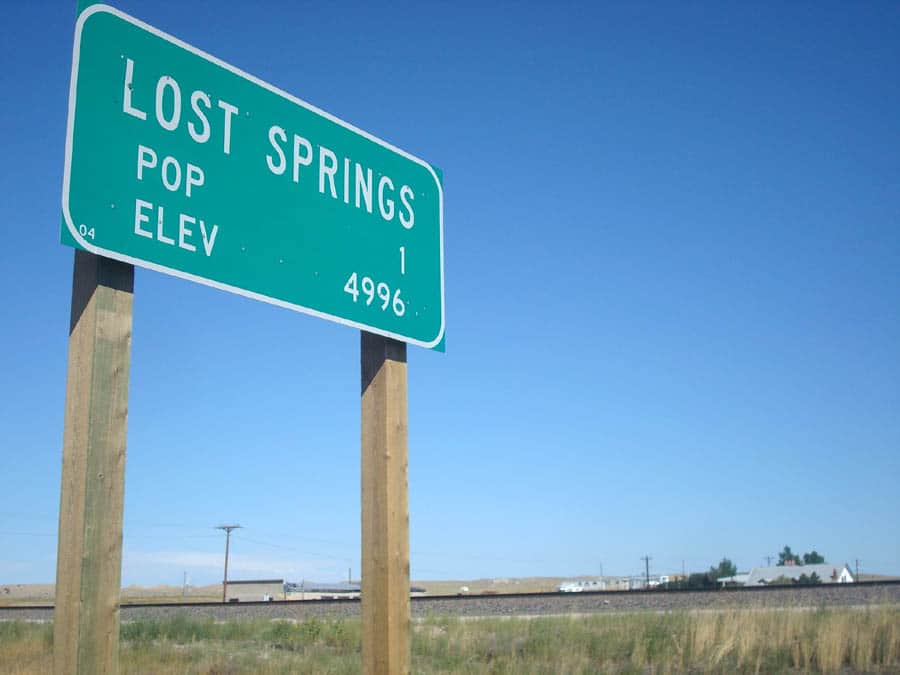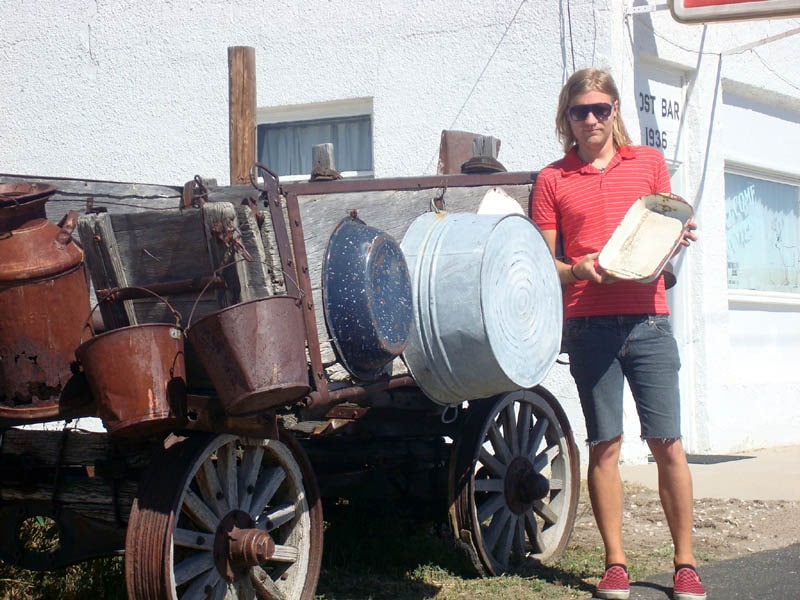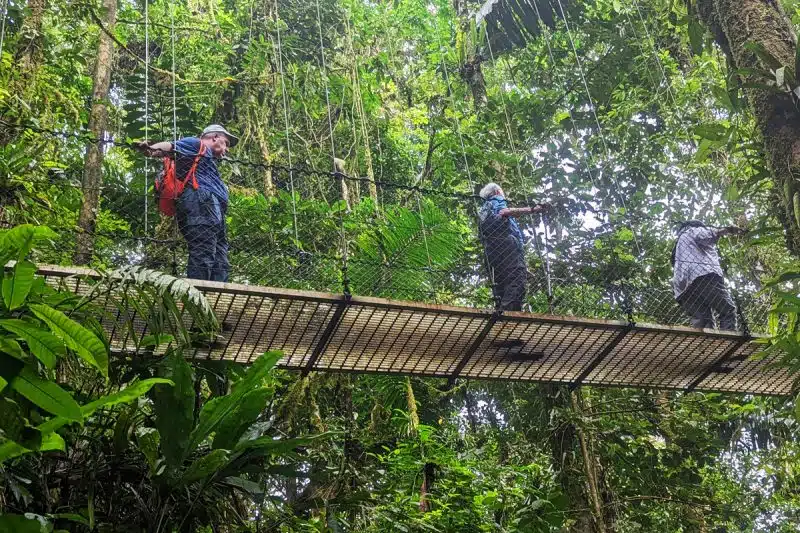During my cross-country road trip, Lost Springs, Wyoming was one of four American municipalities with an official population of one, according to the 2000 census.
The town in the eastern part of the state on U.S. Route 20 displays its official population on its welcome sign.
I had to stop by to find out exactly what a town with one resident looks like. Keep scrolling to see the photos!
UPDATE: The official Lost Springs population is no longer 1. It’s ballooned all the way up to 4 people! The original article follows below, with an update at the end on the current population.
What is there to do in the town with 1 resident?
Not a whole lot. But to be fair, Lost Springs actually has more going on than you’d expect from such a tiny town.
In what might be referred to as the “downtown” area, they’ve got their own post office/general store, a bar with a neon Coors Light sign, and a small grassy park. With outhouses.
There’s an old timey wagon with old timey pots and pans, presumably a nod to the Old West frontier way of life. Or maybe they still use them to cook dinner and wash clothes.
Just beyond the bustling business district, the town is surrounded by sunny farm country. And that is the entirety of Lost Springs.
The main road begins to wind and turns to gravel. Even so, the speed limit remains an impressive 40 mph.
The truth about the population of Lost Springs
Lost Springs actually had five residents in 2000, according to self-elected mayor Leda Price, who runs the bar. But apparently only one returned his or her census form. That’s how it got an official tally of 1.
After the figures from the 2010 census were released, Lost Springs lost its designation as a town with 1 person. Its official population skyrocketed all the way to 4!
And as of the 2020 census, the population jumped again, to 6. That’s a 600% increase in population in just 11 years! What other town in the U.S. can say that?

It would’ve been nice to chat with a local Lost Springs resident, but no one seemed to be around when we visited. We did spot a couple of parked cars, but no humans were around on this particular day.
Perhaps I can try again next year with another Wyoming town. The town of Buford is now claiming to have a population of one as well, and its lone resident was recently featured on CNN.
Lost Springs History, Location, Climate
For more on Lost Springs, check out the town’s Wikipedia entry, which goes into quite a bit of detail about its history.
If you’re wondering how it got such an interesting name, legend has it that railroad workers came to the area looking for springs on survey maps in the 1880s, but could not locate them. Hence, “Lost Springs” was born.
The Lost Springs population peaked at 207 in 1910, when the nearby coal mine was still in operation.
By 1950, the population was down to 9. Amazingly, the official tally of residents has remained in the single digits for the past 70 years now.
Is it likely that Lost Springs, Wyoming will turn into a ghost town? That does seem like a possibility.
There are a lot of former mining towns that have become ghost towns after the mines closed down. Rhyolite, Nevada is an example of one such town. Hopefully, Lost Springs will be able to avoid that fate!
Lost Springs is in Converse County, Wyoming. The nearest city with at least 50,000 people is Cheyenne, Wyoming, which sits 112 miles away. From Denver, you’re looking at a drive of just under four hours.
The climate here is somewhat like a desert. It’s very hot and dry during the summer. Officially, the climate is “semi-arid,” with 13 inches of precipitation per year.
If you’re thinking of visiting, high temperatures in July and August average 85 F, while highs from December to February are stuck in the 30s F. So the most comfortable time to visit is spring or fall.
Would you visit a town that has so few inhabitants?






